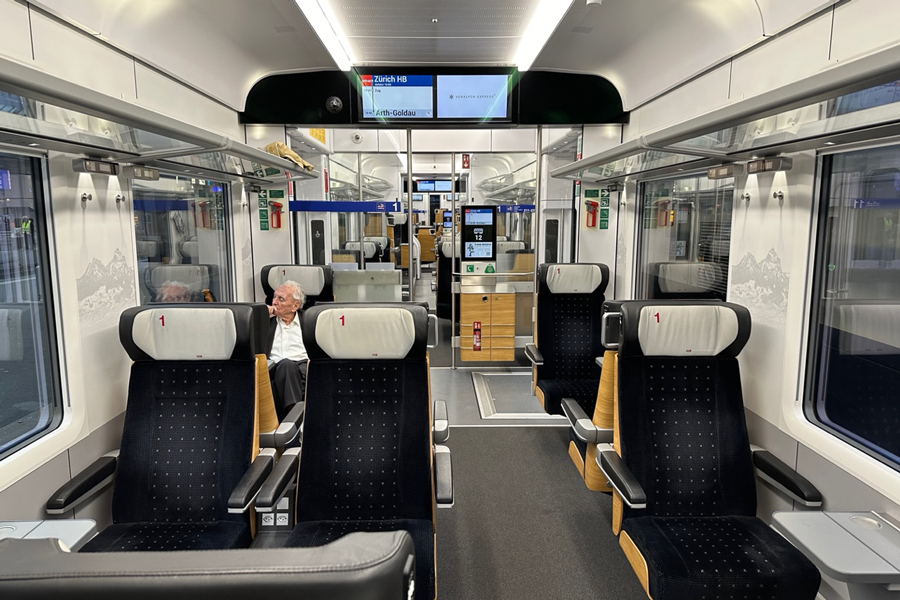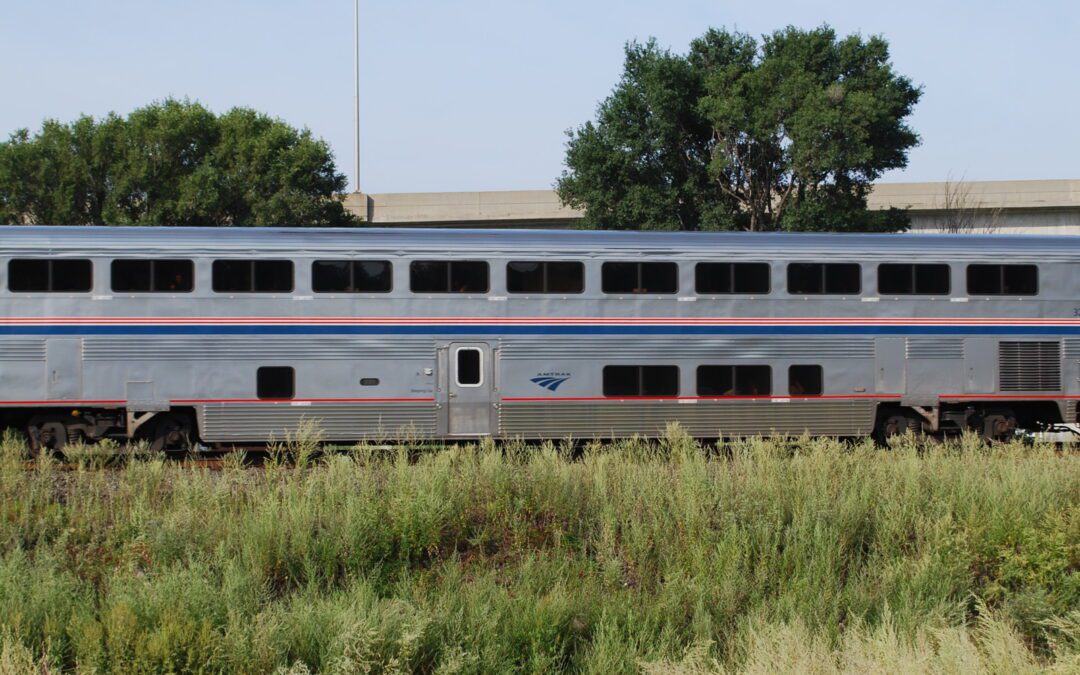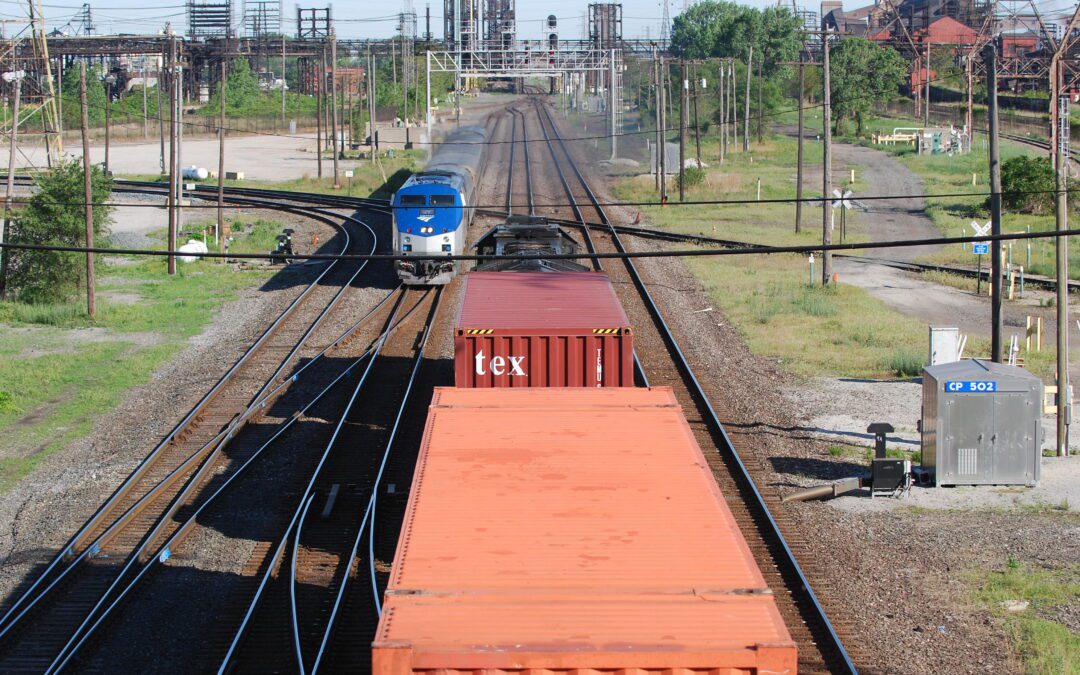Help Expedite the Long-Distance Fleet Order Despite Congress appropriating substantial funding to replace Amtrak’s aging long-distance fleet, no order has yet been placed. This delay, paired with worsening equipment shortages and the retirement of damaged or outdated...
Guest blog by Caleb Villamin
Unlike the selective transportation planning common in the U.S. and Canada, Switzerland prioritises urban development around public transportation, resulting in more walkable communities, sustainable growth, and enhanced overall mobility.
A Train-Based Society
The people of Switzerland travel by train more than any other nation, with a total distance of 2,400km per person, per year. In fact, ⅓ of the population live within five kilometres of the country’s main rail line, running from Geneva to St. Gallen, and passing through major cities such as Bern and Zürich. Naturally, with such high ridership, the Swiss have relatively low cars per 1000 people at 590, matching Japan. The U.S on the other hand has about 800 cars per 1000 people. There is the popular misconception that because the U.S is so big, there isn’t enough demand or a need for trains and public transport, but this could not be further from the truth. The median commuting distance in the U.S is 20 km (12 miles), which are mostly made in cars, rather than trains or buses. This is a result of car-dependent urban planning, which prioritises cars above other modes, and makes travel almost impossible without one. Before the 1950s, the U.S. had many walkable neighbourhoods, towns, and cities and with excellent train and public transport services, from cities as large as Los Angeles and Chicago, to as small as Milwaukee. But after World War II, the Interstate Highway programme caused the destruction of many of these walkable and historic urban spaces, replaced with large highways. Switzerland though was built differently. With Japan’s introduction of the Shinkansen in 1964 showing the world the future of rail travel, and France following soon after with the TGV in 1981, the Swiss Federal Government undertook various rail projects that would transform the Swiss railways and urban planning into the efficient, walkable, and reliable service we know today.

⅓ of the Swiss population lives within 5km of the nation’s main intercity railway
The 1980s Overhaul: Integrated Timetables, The S-Bahn, and Rail 2000
A key aspect of Switzerland’s rail system is the integrated timetable, which runs trains and other forms of public transport nationwide at regular intervals, which guarantee “regular, recurring connection times”. For example, a 15-minute interval bus route that comes at say 09:45, will line up with a 15-minute train service that arrives at a nearby station at 10:01. While a cornerstone of efficient operations, this plan was only established in 1982 by one Samuel Stähli, a civil engineer and “railway buff” from Canton Bern. Before this, travel times were much longer due to the uncoordinated rail and bus service, making transfers longer and more tedious. Stähli, alongside the members of the railway enthusiast “Spinnerklub”, devised a unified, national railway timetable, based on topographical maps. Presenting their plan to a professional committee in 1972, they won over the SBB (Swiss Federal Railways), who contributed resources to refine their network.
Building off of the successes of the integrated time table, the Rail 2000 plan from 1987 was a revolutionary rail expansion and renovation project which sought to achieve the following:
- Reduce travel times between hub stations to under one hour
- Increase service frequency
- Upgrade infrastructure to accommodate higher-speed rail service
With a total of 130 projects completed in this plan, it remains one of Switzerland’s most ambitious to date. It expanded railway termini such as in Zürich, Bern, and Basel to allow for more frequent service between large cities. S-Bahn tunnels were dug underneath Zürich for through-running operations, allowing for more seamless travel within the metropolitan region. The upgrade of legacy railways, alongside the construction of entirely new ones, created more direct and faster connections between cities, boosting economic growth.
Transit-Oriented…Everything!
Compared to Anglo-North America, the concept of “transit-oriented development” is discussed a lot more than in Switzerland, and many European countries. This is because this kind of development is already baked into the urban design of many planners. In Switzerland, almost every neighbourhood, town, village, and city, will be designed about transit-oriented, walkable urbanism. From alpine villages, towns of less than 20,000 residents, single-family residential neighbourhoods, you can find regular, reliable transit service in buses, trams, and trains. Some shared characteristics between most places in Switzerland that make them transit-friendly are:
- Compact design/density
- Mixed-use development
- Transit service to connect to larger hubs
- Walkable urbanism

The Swiss Train Experience
While Switzerland has a reputation for having expensive public transport fares, there’s almost nowhere else that can match the same level of service, frequency, comfort, and convenience. The effortless experience begins even before you step on any form of transit on the SBB app. A convenient tool, the app allows for seamless purchase of tickets and route planning between all forms of public transport across all 26 federal cantons. One can easily purchase a single ticket that accounts for changes in mode, such as buses, trams, ferries, and trains. With the clock-face scheduling discussed earlier, the app always plans for the most convenient and doable transfer between stations and modes, ensuring you reach your destination on-time. For local residents with annual transit passes, their pass can be stored and accessed from the SBB app.
The on-board train experiences are some of the best in the world. The designs are warm and inviting, with plush seats and plenty of space whether it be a regional S-Bahn or a long-distance intercity train. Much of SBB’s fleet is undergoing modernisation, bringing welcome amenities such as more spacious, accessible toilets, WiFi, on-board vending machines, and more inviting designs. And of course, the views on any route are stunning.

The Future of Rail in Switzerland: Rail 2050
As Switzerland’s population continues to increase, SBB is underway with the ambitious Rail 2050 plan to meet national climate and transportation needs. In a press conference in August 2023, the Swiss Federal Government announced plans for SBB to expand its services across short, medium, and long distances, focusing on “replacing driving and flying” as the primary mode of transport. With land being limited and expensive, maximising space for transportation infrastructure is critical in addressing future mobility demand. In that same press conference, SBB stated that they were requesting 2.6B Francs in funding for three key railway expansion projects:
- An 8 kilometre rail tunnel in Canton Vaud, allowing for more trains to run between Lausanne and Geneva
- The 14-kilometre Lötschberg base tunnel – connecting Canton Bern with Canton Valais’ main valley, reducing delays and allowing for refurbishment of the existing tunnel
- Grimsel Tunnel between Bern and Oberwald – gearing up to be Switzerland’s third-longest rail tunnel.
Alongside this new infrastructure, the Swiss government has announced support for 300 previously-planned rail projects. They mainly include railway route expansions, tunnels, and renovations of legacy stations in major cities such as Bern, Basel, and Geneva.
A recent national vote rejected a 5B CHF highway and roadway expansion between major cities such as Bern, Lausanne, and Geneva. On Sunday, the 24th of November 2024, the Swiss Green Party celebrated the project’s rejection, calling it an “out-of-date transport policy”, and are now campaigning with left-wing and ecologist groups to reroute funds to public transport and active mobility. With all these projects targeting rail expansion, Switzerland seems on-track to deliver a greener, more sustainable national transportation network.

Get Involved
Tell the United States Congress: It’s time to reconnect the country with high-speed and regional rail!
The Latest from HSRA
Our Latest Blog Posts
Check out the latest news, updates, and high speed rail insights from our blog!




